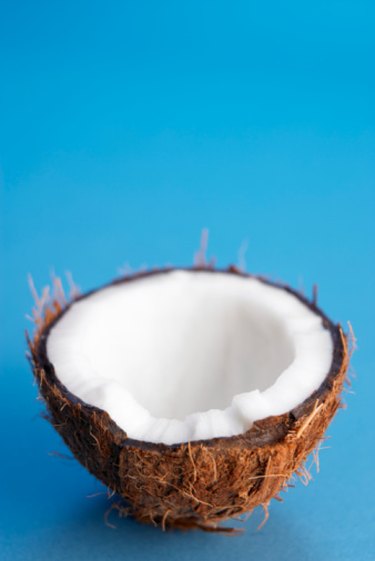
Palm trees and coconut trees are one and the same. A palm tree can yield about 50 coconuts per year, and each coconut takes about a year to grow. At differing stages in their maturity, coconuts can be utilized to produce milk, water, oils and flakes. Knowing the different stages of coconut development will help you know when each of these is best harvested.
First Stage
Video of the Day
Flowers form near the trunk of the coconut tree around the palm leaves. From these flowers, the "nut" or pei forms. Because these bright green fruit are small and immature, they often fall from the tree. Those that are able to survive burrowed within the tree leaves will continue to grow. Even in this immature state, the larger nuts can hold up to 1 liter of coconut water inside. This liquid is commonly drained and used in coconut water.
Video of the Day
Second Stage
Eventually, the green coconut begins to ripen and turn brown. At this point it begins to develop a gel-like layer just under the surface. If the pulp is taken from the shell, it will have a soft but solid consistency. This is the familiar white coconut meat or pulp. Cans of coconut milk purchased in stores have meat from this stage of maturity.
Third Stage
While the coconut is still on the palm tree and continuing to mature, it is becoming larger and its husk is becoming harder. This is when the edible usefulness transitions. Almost all of its use comes from harvesting the now hardened meat or pulp. It can be taken out of the shell, dried and eaten in flakes. It can also be dried and converted to coconut oil. The milk within the coconut is now tasteless and is not as plentiful as in earlier stages.
Fourth Stage
If the coconut is never harvested, it becomes fully mature and begins to germinate. Coconut germination is when the coconut starts to reduce itself and prepare for budding to start the cycle over again. The coconut meat and liquid become fully absorbed and a ball forms within the coconut. This ball can be eaten, but it is not advisable to do so because the sweet ball inside can also be poisonous.